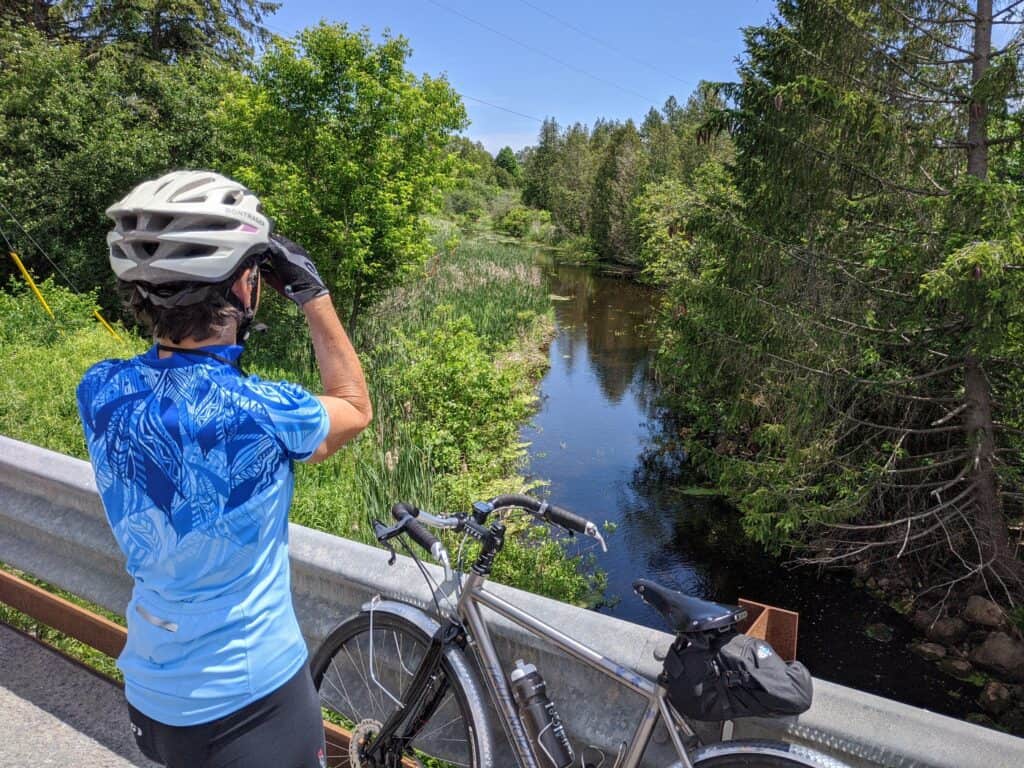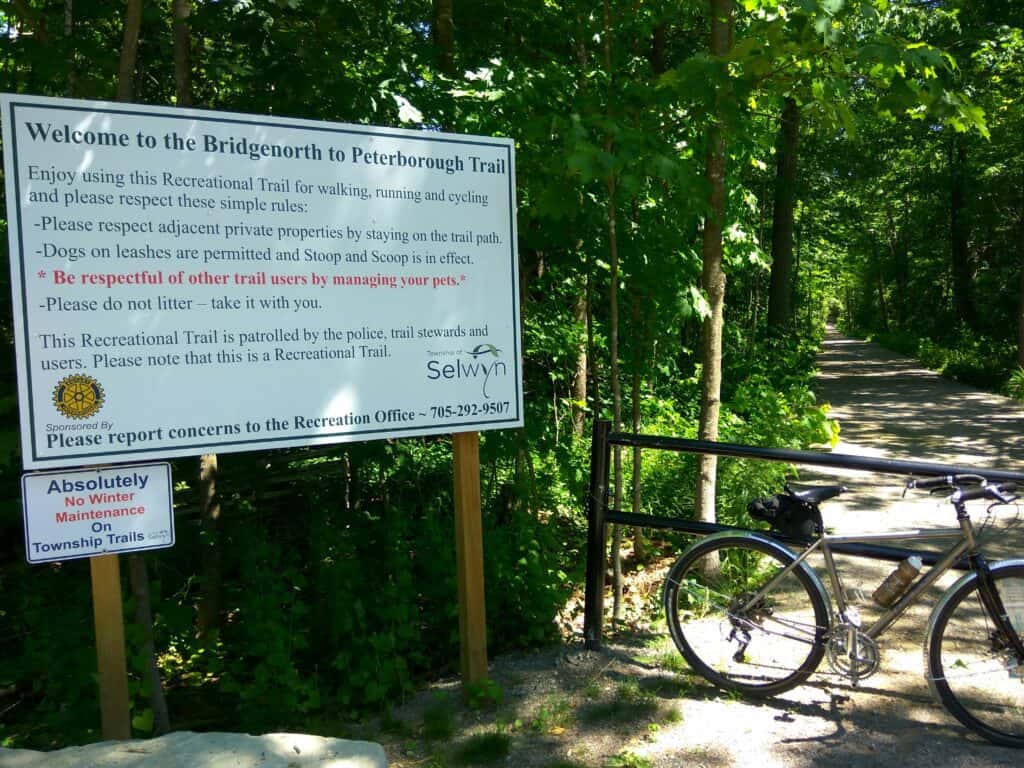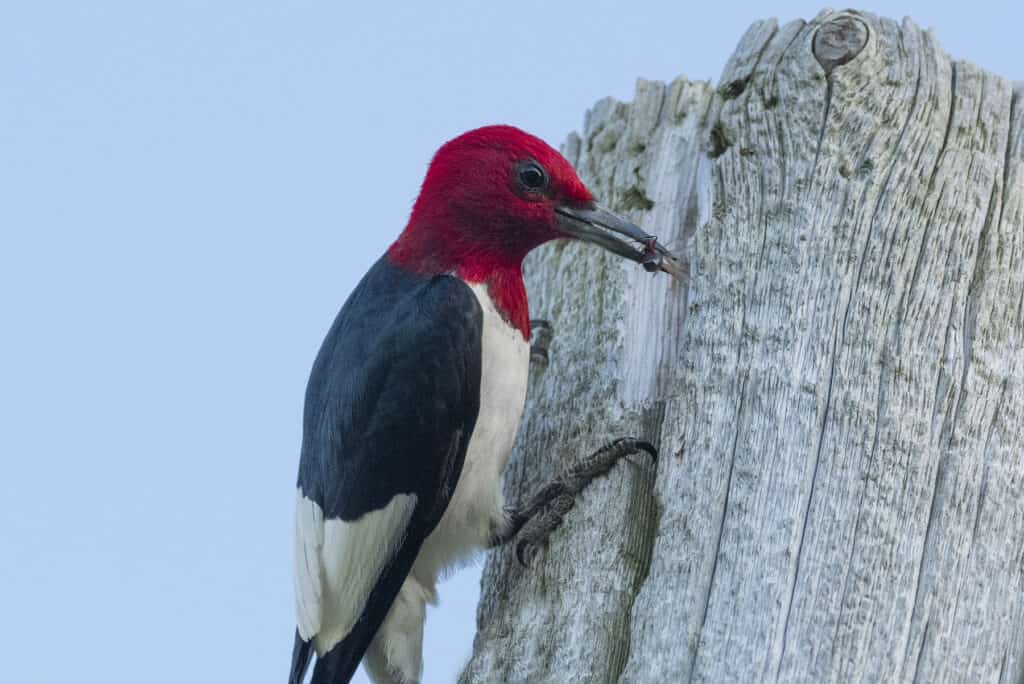Peterborough Examiner – July 2, 2021– by Marilyn Freeman
It seems like a lifetime ago that I read Robert Pirsig’s “Zen and the Art of Motorcycle Maintenance”. I’m not interested in motorcycles, but one concept stuck with me. On a motorcycle, he says, there is a connection to one’s surroundings that is very different from being in a car. There is a 360-degree view, there is smell, there is the temperature of the air, there is the wind, there are the sounds, and there is no frame circumscribing the view. One must pay continual attention. I translated this idea into a lifetime of riding a bicycle – and observing nature from my bike saddle.
One advantage of riding alone
Although I have been watching birds for most of my adult life, I’m really not all that good. But when Covid-19 forced me to do my bike-riding alone, I was made aware of all the bird song I had been missing by having conversations with fellow cyclists. A new world of “ear-birding” opened up. My identification skills improved. Each time I heard a bird I could identify by its song, I called out its name and was thankful that I was alone because I’m sure I looked a little unhinged. If I couldn’t ID the call immediately but had an inkling, I’d stop, pull out my phone with my birding app and play what I thought the bird might be. If I was right, I gave out a whoop of delight!

(Cary Weitzman)
Small pleasures give great rewards. I’d be slogging my way slowly up one of the many drumlins of Peterborough County and instead of thinking how hard the hill was, I’d be trying to identify the wildflowers along the roadside. After all, I’m going slow enough to see them well! Each flower has its season and for me, the early spring bloom of yellow coltsfoot alongside the shoulders and ditches is a harbinger of warmer temperatures to come. Every year there has been a predictable procession of “what’s next”, something very comforting in an unpredictable world. Frighteningly, with climate change the predictable and comforting is becoming less so and the extremes of temperature, particularly the heat, make cruising around the county harder.
I’ve learned that ospreys don’t like bicycles. They shriek loudly as I approach. Neither do red-winged blackbirds. Or meadowlarks. I still haven’t figured out why. I also learned that yellow warblers are very proud of themselves, announcing “sweet, sweet, I’m so sweet” emphatically and constantly. Field sparrows seem to like ping pong. That’s what their song sounds like – a ping pong ball dropped on the table increasing in speed as it decreases in height. Bobolinks, on the other hand, don’t seem to mind people on bikes at all. They just keep singing their maniacal song.
Sometimes it’s necessary to play chipmunk dodgeball. The explosion of the chipmunk population has meant that the swift critters race out onto the road, see me and do an immediate 180 back to the edge. Sometimes their timing makes riding unnerving.
While it’s obvious that cycling is good exercise, staying ahead of the mosquitoes, blackflies and horseflies adds a certain impetus to keep moving.
E.T. Bailey, author of “The Sound of a Wild Snail Eating”, is bedbound by a mysterious illness picked up while she was hiking in Switzerland. A friend brings her a flowerpot with some earth, violets dug up from a local field and a small snail. Observing the snail, the only activity she could do during her illness, Bailey shows “how a small part of the natural world illuminates our own human existence and provides an appreciation of what it means to be fully alive”. Forced close observation, followed by internet research when she had the strength, led Bailey to some amazing discoveries. Snails have around 2,640 teeth arranged in lines of 33 backward pointing teeth over about 80 rows like a rasp. In a snail, this arrangement is called a radula. As the front row of teeth wear down, a fresh row is added at the back and gradually the radula moves forward over a period of 4 to 6 weeks. As Bailey says, “With only thirty-two adult teeth, which had to last the rest of my life, I found myself experiencing tooth envy toward my gastropod companion.”
The riches of Peterborough County
Throughout the Covid pandemic, many people have taken to the outdoors to stay calm. There has been a huge boom in the use of trails and the sales of bicycles. In fact, it’s difficult to buy a bike or bike parts right now due to demand and supply line issues. Locally, the Harold Town Conservation Area parking lot is always full to capacity with the overload cars parked along Old Norwood Rd. The same scenario is played out at every access to The Great Trail (formerly the Trans Canada Trail), the Rotary Bridgenorth Trail, the Bridgenorth-Peterborough Trail and the trails around Millbrook.

This has also been a great time to get out and explore the back roads of Peterborough County, one of the best if not THE best place in all of southern and central Ontario to ride. The secondary paved roads are quiet and the dirt roads, which are usually in excellent condition, are even quieter. There are roads in the county that make me feel like I’m on a vacation every time I ride them. Visit any bike shop or Peterborough’s tourism office to pick up a free bike map and start exploring.
Let the busyness drain out of your brain and pay attention to simply observing. Surprises are guaranteed. “Killdeer blend right in with a fallow field and even though they were moving, I couldn’t see them – until suddenly I did…The sharp thrill of seeing them reminded me of childhood happiness…perhaps a kind of euphoria we adults manage to shut out most of the time. This is why I bird-watch, to recapture what it’s like to live in this moment, right now.” (“Birding with Yeats” by Lynn Thomson.)
Gratitude
This spring I had a special reward. It will seem very small, but it caused me to stop riding and laugh in delight. I heard and then spied a red-headed woodpecker sitting on a tree in full sunlight – on the same road in the same spot as last year! I think my face radiated joy and gratitude for my good luck at the sighting and being in the right place at the right time – twice!

In an interview with The Guardian (May 23/20), Robin Kimmerer, author of “Braiding Sweetgrass”, reflects on what is necessary to regain a balanced world. “A contagion of gratitude…I’m just trying to think about what it would be like. Acting out of gratitude, as a pandemic.”
What an idea! And that’s exactly what I feel when birding or observing from my bike saddle.
Marilyn Freeman is a member of the Peterborough Field Naturalists and board member of the Peterborough Bicycle Advisory Committee. She can be reached at marilyn.freeman2@gmail.com
CLIMATE CRISIS NEWS
ALARM: The prolonged and dangerous heat wave in western Canada is a preview of the kind of extreme weather event that will become much more common with global heating. New daily record-high temperatures were recorded in every region of B.C. The town of Lytton hit 47.9 C which is hotter than the hottest temperature ever recorded in Las Vegas. “This is absolutely connected to climate change,” said CBC meteorologist Johanna Wagstaffe . “First of all, our baseline has shifted. Our new normals are already one to three degrees warmer across the province, even up to four or five degrees warmer through the north… This is consistent with what climate change will continue to do to our province.” See https://tinyurl.com/65fekhmx
HOPE: On June 22, the House of Commons passed Bill C-12. This legislation, if passed by the Senate, will be an effective tool to hold governments accountable for real climate action.
Thousands of engaged Canadians signed petitions and called and emailed their MPs to improve the legislation. It now includes a 2026 emissions objective; stronger, more frequent progress reports; an independent advisory body that combines Indigenous and climate science expertise; and submit a plan within six months to meet our 2026 emissions objective and 2030 target. See https://tinyurl.com/4kydfsx8
TAKE ACTION: To see a list of ways YOU can take climate action, go to https://forourgrandchildren.ca/. Scroll down and click on “This Month’s Action” or “Find Another Action You Can Take Today”.